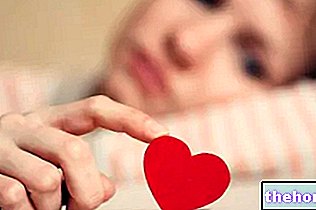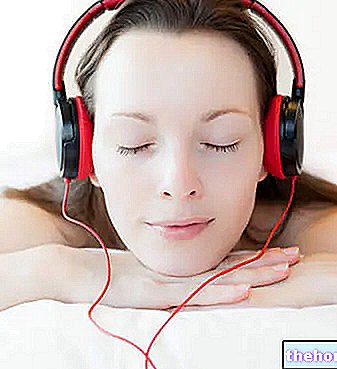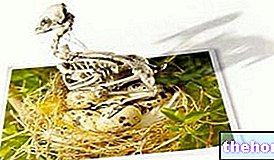Index Section
Sleep: why is it important?Insomnia
HypersomniaTransient sleep-wake disturbances
Persistent sleep-wake disordersThe parasonies
Sleep and road safetyObstructive Sleep Apnea Syndrome (OSAS)
Sleep Apnea: Also a Safe Driving ProblemObstructive Sleep Apnea Syndrome: cardiovascular implications
Restless Legs SyndromeSupplements for sleep
TheanineHypnotic-sedative drugs
Herbal tea against insomnia - Medicinal herbs useful against insomnia
Sleep and its disorders
When it comes to sleep disorders, most of the time the listener immediately thinks of insomnia. We all believe that it has happened, at least occasionally, to spend a few nights without being able to sleep. And on the basis of this personal experience we often tend to make the generic definition of "sleep disorder" coincide with "insomnia. This in reality does not entirely correspond to clinical reality.
Although, in fact, epidemiological studies indicate that insomnia, in all its meanings (chronic vs acute, initial vs intermediate vs terminal), is the most frequent disorder, there are numerous data that confirm that other disorders are highly prevalent in the general population. pathologies ascribable to sleep; an example is hypersomnia (often also referred to as excessive sleepiness), which in a certain sense represents the opposite disorder to insomnia: while in insomnia there is a reduction in the total time of sleep in 24 hours , in hypersomnia there is an increase of the same with a marked propensity to fall asleep even in inappropriate situations. This symptom is very common in the population even if it is often underestimated and underestimated; it can be linked to various primary or secondary sleep disorders and plays a very important social role as it can be the basis, for example, of an increased risk of accidents at work or driving.
One of the diseases most frequently associated with excessive daytime sleepiness is the syndrome of obstructive sleep apnea or snorers' disease, as it was initially called (Lungaresi E., 2005; G. Coccagna., 2000) (Parati G, Lombardi C, Narkiewicz K. Sleep apnea: epidemiology, pathophysiology, and relation to cardiovascular risk. Am J Physiol Regul IntegrComp Physiol. 2007 Oct; 293: R1671-83. Epub 2007 Jul 25. Review. PubMed PMID: 17652356.). The most typical symptom of this disorder is in fact snoring which initially constitutes more of a nuisance for the bed partner than for the patient himself, but which represents an important alarm signal when it is found deserving of a clinical and possibly instrumental study. . Obstructive sleep apnea, in fact, in addition to being linked to the development of daytime sleepiness, are associated with an increase in cardio and cerebrovascular risk, and patients who suffer from it are more frequently exposed to the development of arterial hypertension, heart failure, stroke and arrhythmias (Lombardi C, Tobaldini E, Montano N, Losurdo A, Parati G. Obstructive Sleep Apnea Syndrome (OSAS) and Cardiovascular System. Med Lav. 2017 Aug 28; 108: 276-282. doi: 10.23749 / mdl.v108i4.6427. PubMed PMID: 28853425.) (Aiolfi M. et Al., 2001).
There are therefore those who sleep little and badly, and those who sleep too much, but there are also those who sleep when they should stay awake and are inevitably awake when they should sleep, in this case we speak generically of circadian rhythm disturbances. Furthermore, it is also possible to witness the appearance, during sleep, of atypical phenomena, often linked to a dissociation of the mechanisms that regulate the various phases of sleep; in this case we speak of parasomnia, among which sleepwalking is one of the best known NREM sleep parasomnia (as well as bruxism and enuresis).
Among the parasomnia emerging from REM sleep, the best known is the behavioral disorder of REM sleep (RBD) in which the affected subject acts in dreams by associating a congruous behavior with dream images.
In some cases, these motor phenomena arising from sleep can also be linked to nocturnal epileptic seizures towards which the differential diagnosis is not always easy. (Sudhansu Chokroverty., 2000; G. Coccagna., 2000).
We have thus outlined the four categories of sleep disorders that are taken into consideration by the classification proposed by the American Academy of Sleep Medicine (AASM):
- Disturbances in the initiation and maintenance of sleep or insomnia;
- Excessive sleepiness or hypersomnia disorders;
- Disturbances in the sleep-wake rhythm;
- Disorders associated with sleep, stages of sleep or partial awakening, collectively called parasomnia.
The AASM classification is the one commonly used by those who deal with sleep disorders (Coccagna G., Smirne S., 1993). Although it is open to criticism in some respects and has therefore aroused quite a few discussions about the advisability of revising some points, as on the other hand happens to almost all classifications, it presents a general clarity and simplicity of subdivision of the disturbances.
Edited by Dr. Stefano Casali
Next: Insomnia: what it is, symptoms and causes



















-nelle-carni-di-maiale.jpg)








